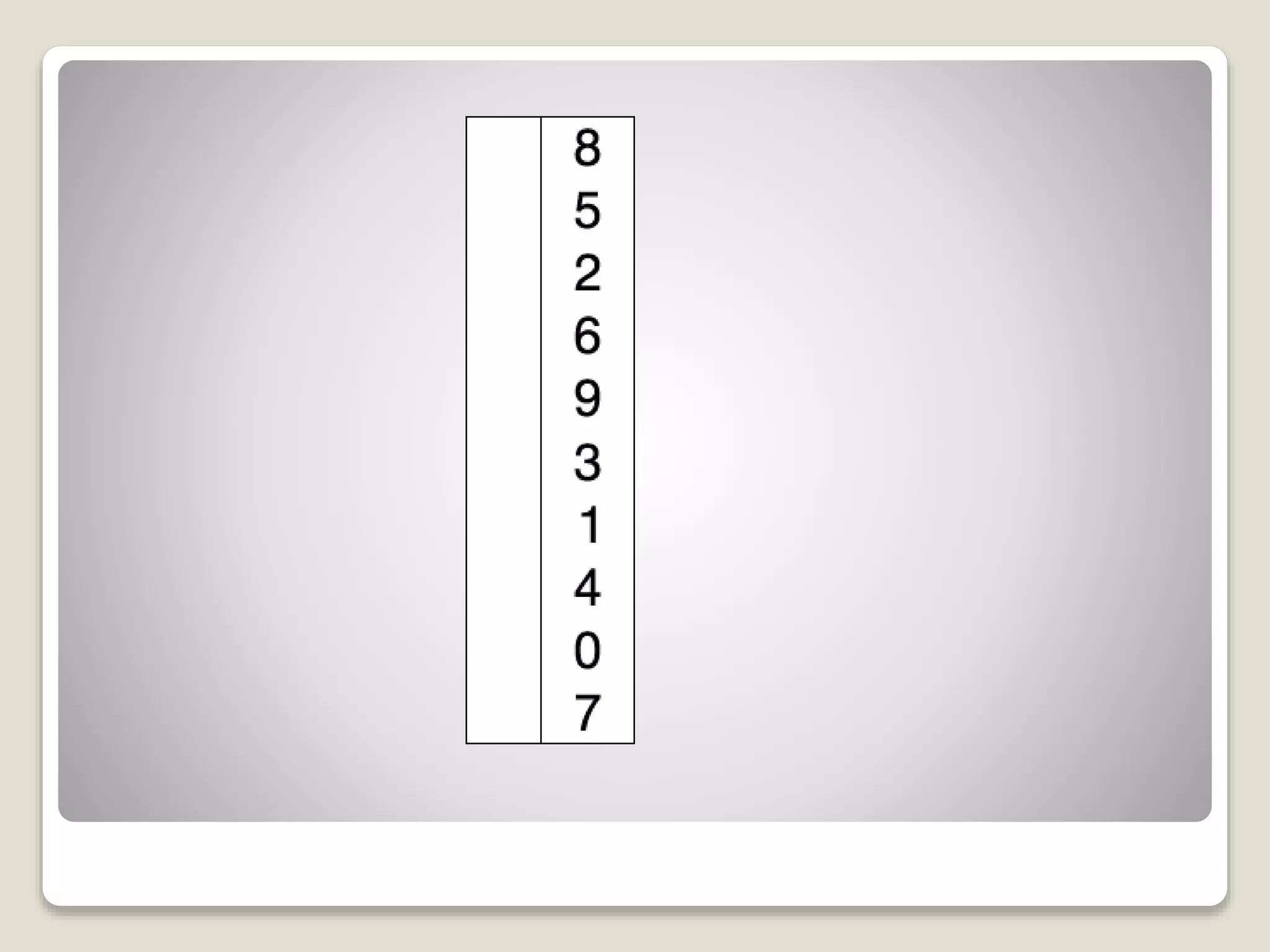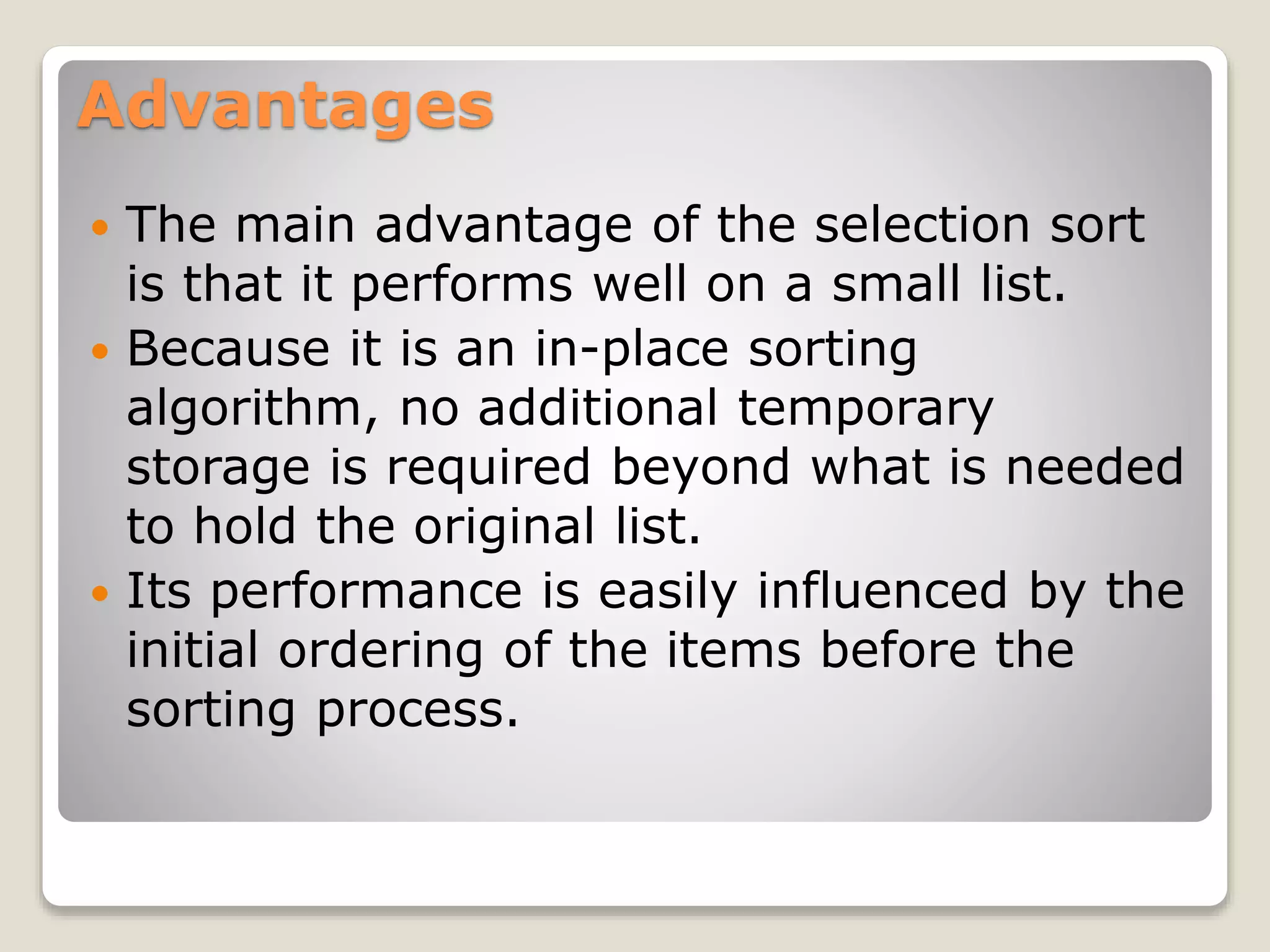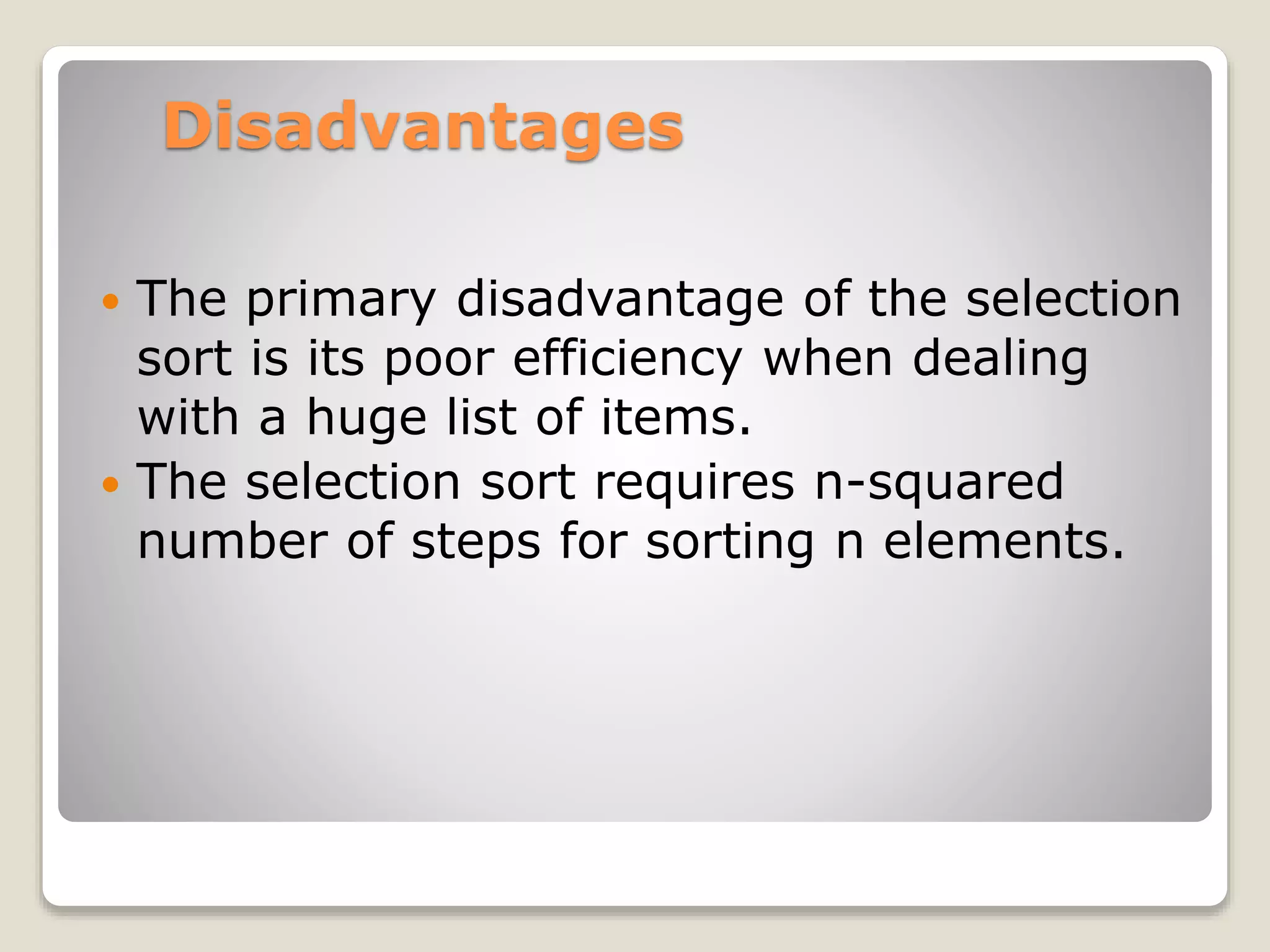The document presents an overview of selection sort, including its definition, algorithm, example, advantages, and disadvantages. Selection sort works by iteratively finding the minimum element in an unsorted sublist and exchanging it with the first element. It has a time complexity of O(n2) but performs well on small lists since it is an in-place sorting algorithm with minimal additional storage requirements. However, it is not efficient for huge datasets due to its quadratic time complexity.

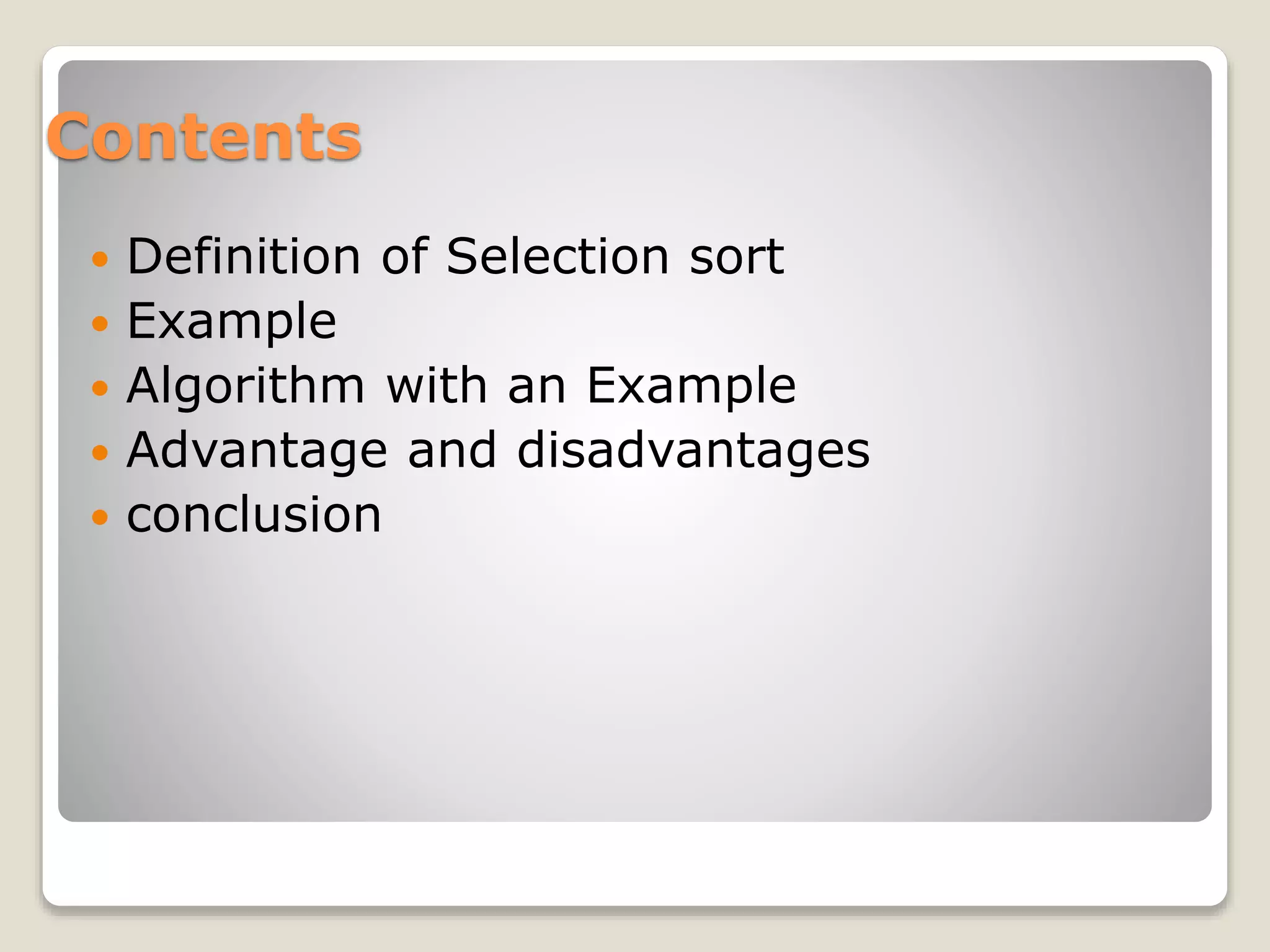

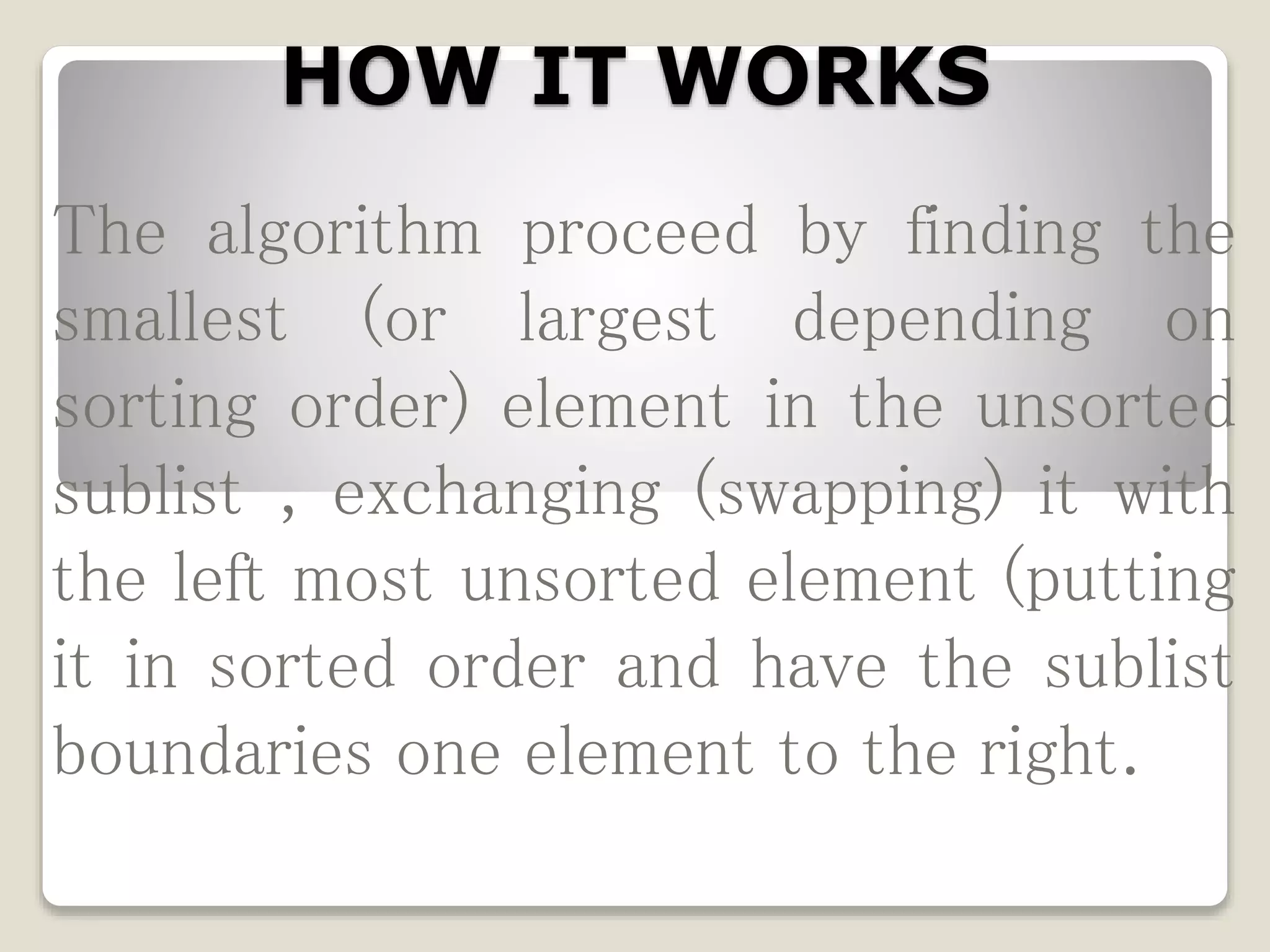
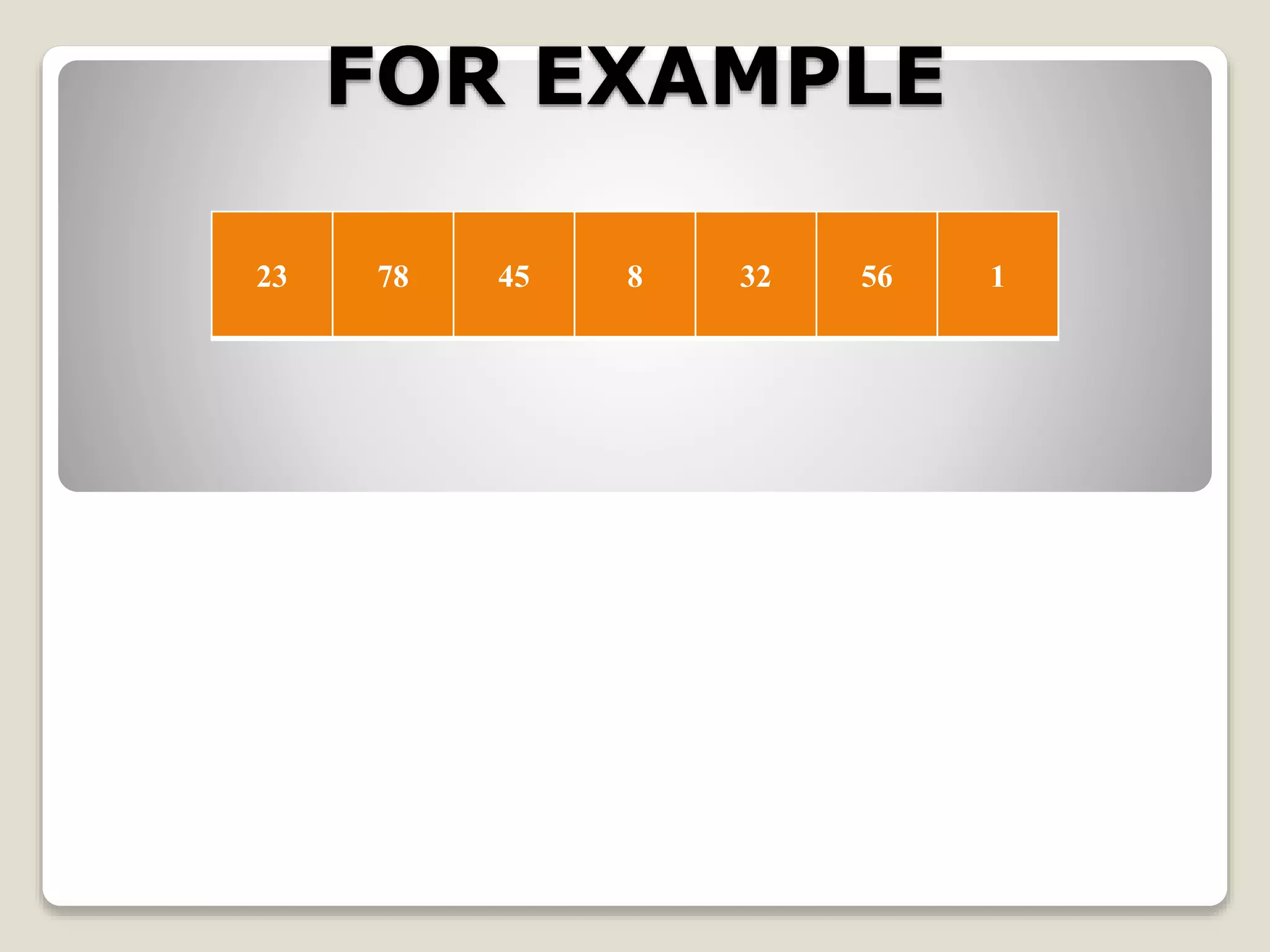
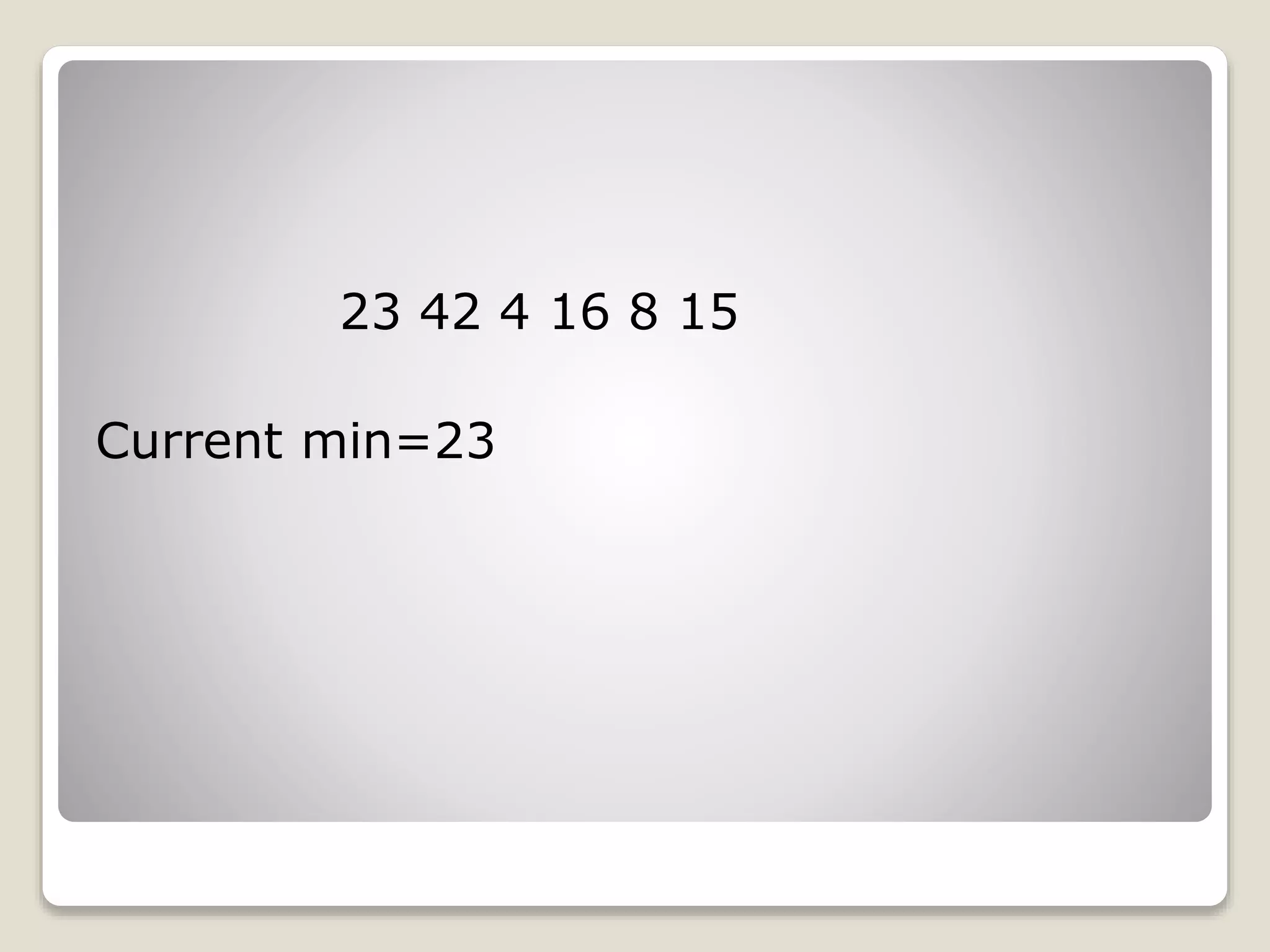
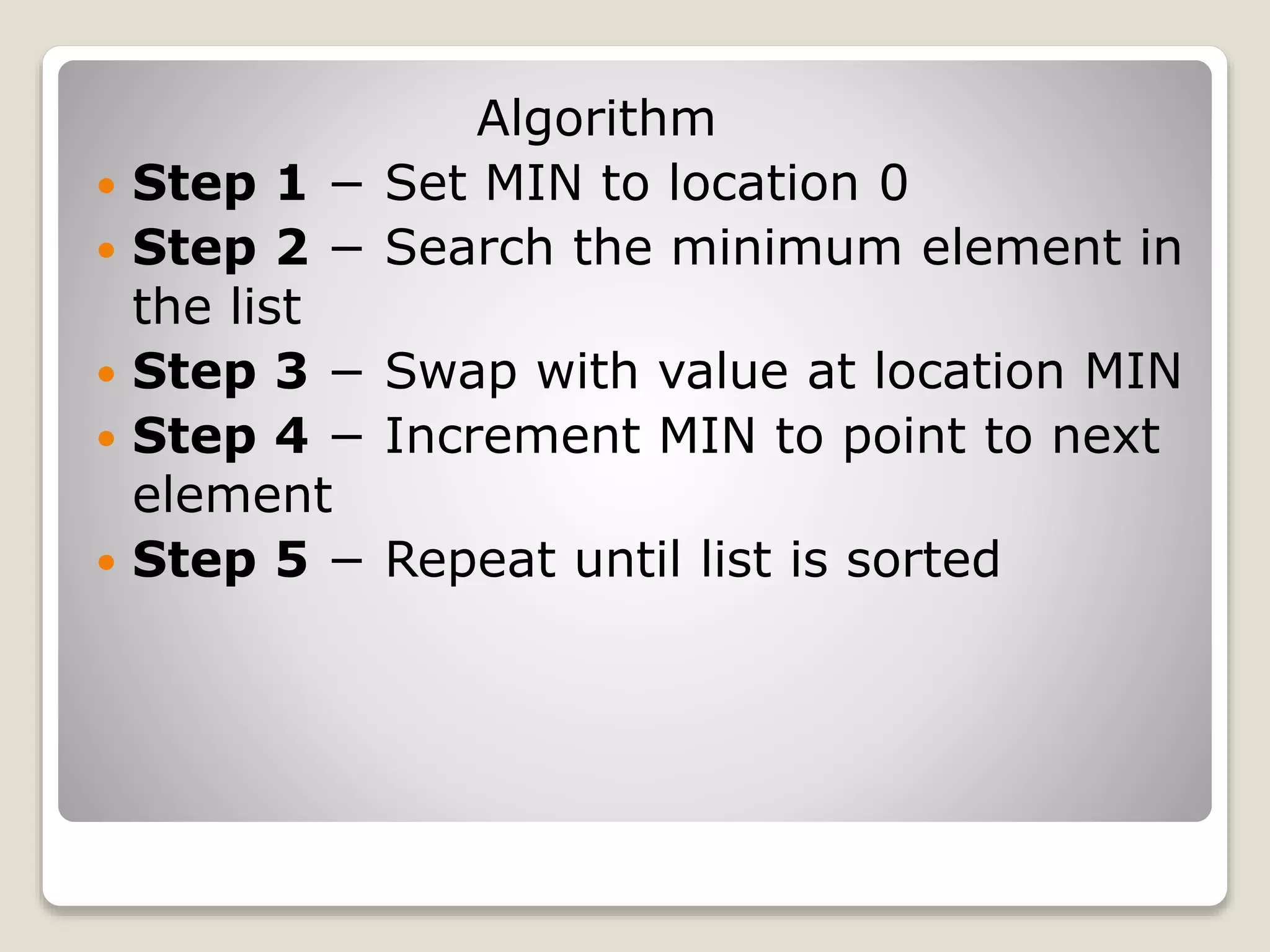
![for i=1 to n-1
min=I
for j=1+1 TO N
if array[j] < array[min]
min = j
if min != i
swap array[min] and array[i]](https://image.slidesharecdn.com/presentationonthetopicselectionsort-170616163844/75/Presentation-on-the-topic-selection-sort-8-2048.jpg)
